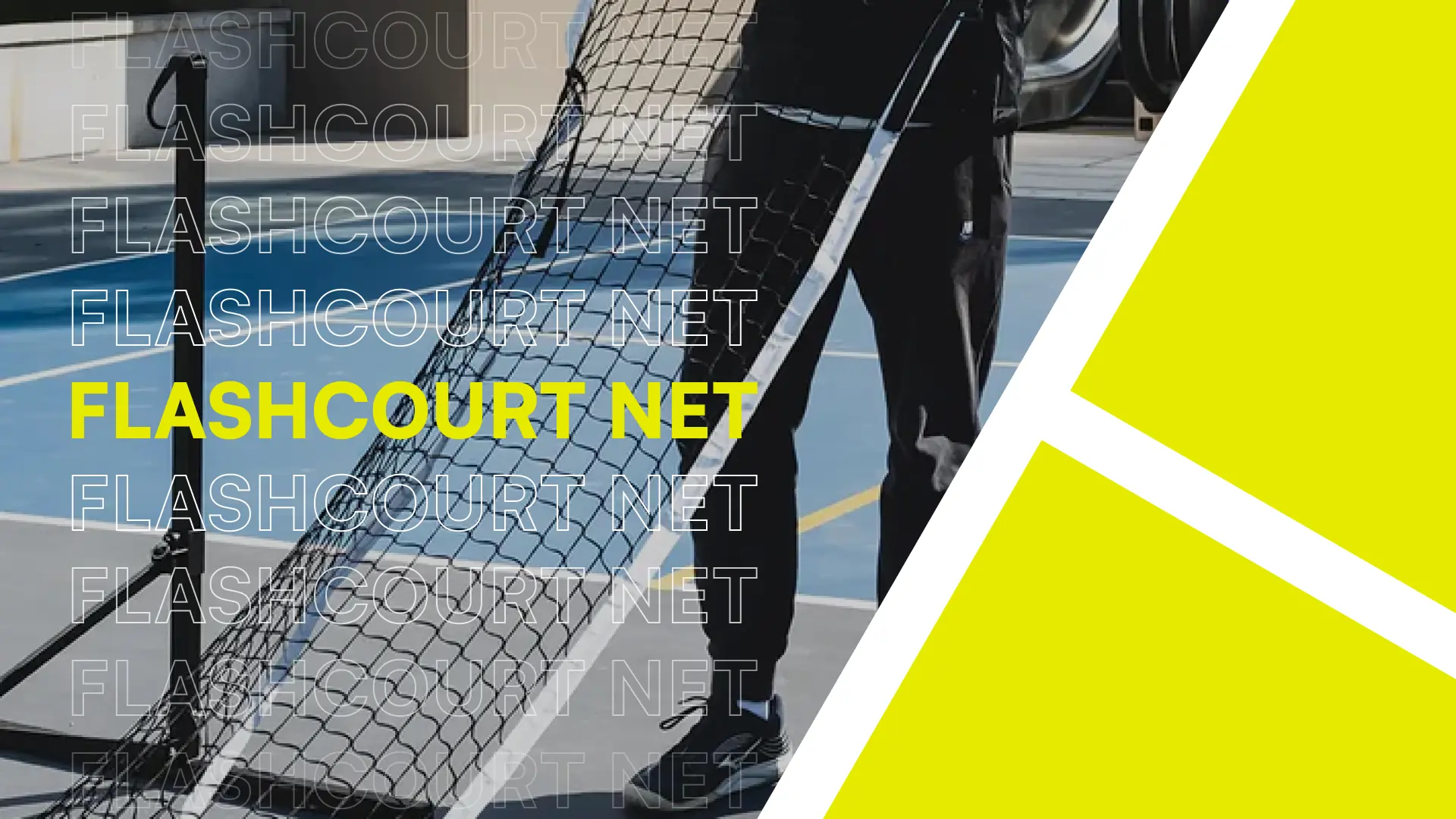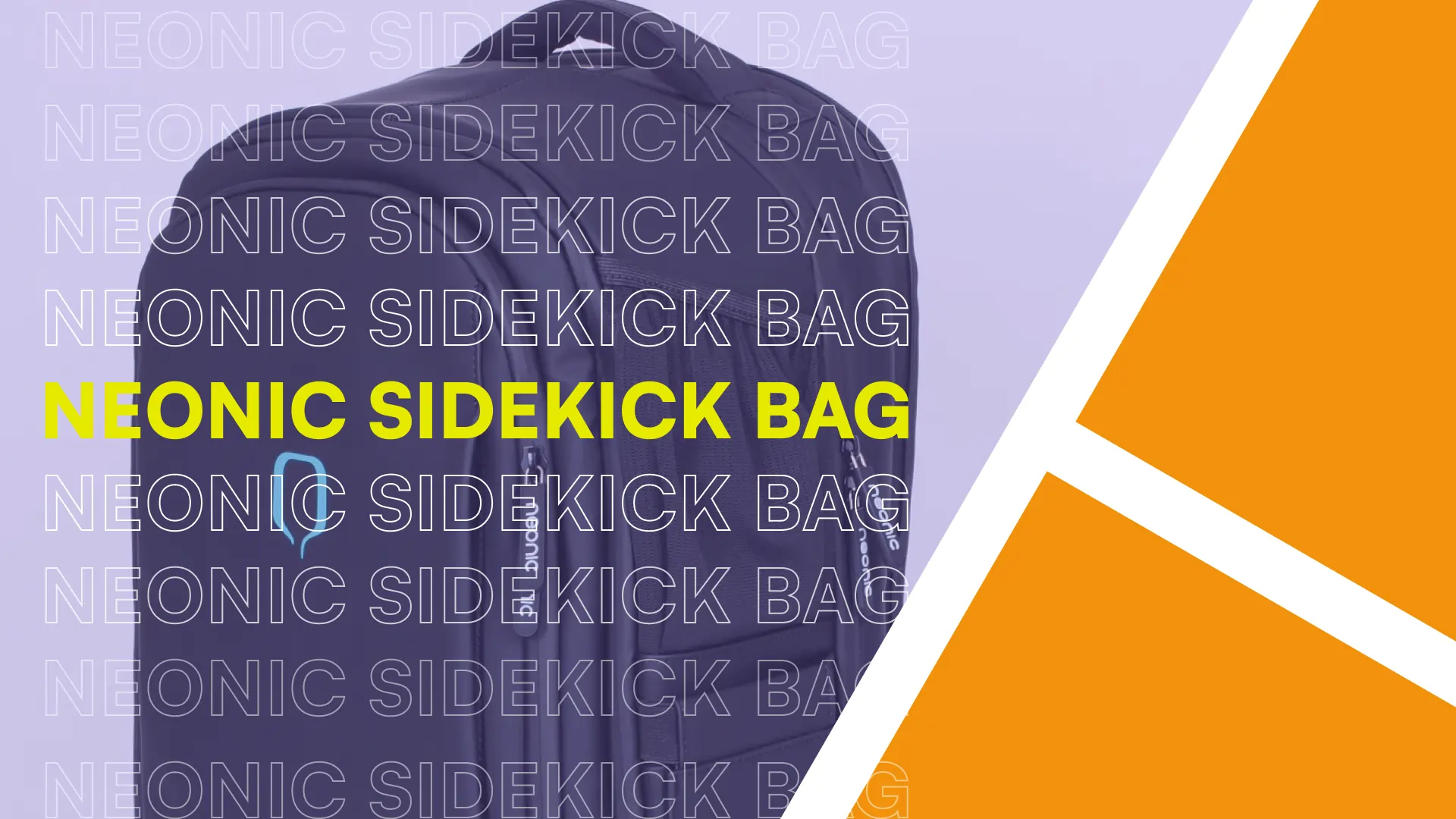Pickleball for Beginners [Gameplay, Rules, & Gear]

Being a beginner in pickleball is actually the best spot to be in. Why? Because you're about to dive into a sport that’s ridiculously fun, super social, and easy to pick up but challenging enough to keep you coming back for more. Best of all, getting started is a breeze. All you need is a paddle, a ball, a partner (or opponent!), and a place to play. That’s it! No complicated rules, no fancy gear—just pure, unfiltered fun.
11 PICKLES is here to show you why pickleball is one of the most welcoming sports for beginners and give you all the tips, tricks, and must-know info to hit the court with confidence. But more than that, we’re here to connect you with a community that loves the game as much as you will. And trust us, once you start, you will be hooked. So sit back, grab a snack (maybe even a pickle?), and get ready to meet your new favorite hobby.
What is Pickleball? A Beginner’s Introduction to the Game
First things first, despite the name there are zero pickles involved in pickleball. (We know, it’s a little misleading.) Instead, the game is played with a wiffle-like ball and solid-core paddles that look like oversized ping-pong paddles. And that’s no coincidence. Pickleball was created as a mashup of tennis, badminton, and ping-pong, originally dreamed up in the 1960s as a game for pure fun and friendly competition.
Fast forward to today, and what started as a backyard pastime has exploded into a global phenomenon. Pickleball isn’t just a hobby anymore; it’s a full-blown movement, complete with professional leagues, tournaments, and a passionate community. Participation has grown over 223.5% over the past 3 years, as pickleball continues unprecedented growth in every age group and region.
The Two Origin Stories
There are two legendary origin stories you’ll hear again and again, each one adding to the charm and quirky beginnings of pickleball. No matter which version you believe, one thing is clear: this game was built for fun.
Pickles the Dog Origin Story—The cutest pickleball name origin theory suggests that the game was named after Joel Pritchard's dog Pickles. Rumor has it Pickles the dog kept stealing the spotlight—snatching the ball mid-game and dashing off before the next point. While this origin story has its flaws, it adds to the fun and quirky charm of pickleball!
The Pickle Boat Origin Story—In the sport of rowing, a “pickle boat” refers to a boat with a crew of mismatched rowers. They are the leftovers or the odd ones out that come together to make quite a unique unit. When asked why pickleball is called pickleball, accomplished rower Joan Pritchard, Joel Pritchard’s wife, said the game was named after a "pickle boat" due to its mix of elements from badminton, tennis, and ping-pong.
This theory seems to hold more weight since Joan claims that the dog wasn’t around until after pickleball was created, and Pickles was then named after the game.
The Perfect Sport for Beginners
Pickleball is hands down the best sport for beginners, and we’ve got seven solid reasons to prove it. By the time you’re done reading, you’ll be grabbing a paddle.
- Easy to Learn, Quick to Play: Simple rules, an underhand serve, and a “kitchen” (non-volley zone) make it way more beginner-friendly than tennis.
- Less Running, More Rallying: A smaller court means less sprinting and more fun—longer rallies without the exhaustion.
- Slower Ball, Better Control: The wiffle-like ball moves slower, giving you more time to react and master your shots.
- Friendly & Social: Pickleball is known for its open play sessions making it easy to jump in and meet new players.
- Low Impact, All Ages Welcome: Gentle on the joints, great for all fitness levels, and perfect for anyone looking to stay active.
- Affordable & Accessible: Low overhead, less equipment, & free courts make getting started easy and budget-friendly.
- Ridiculously Addictive: The mix of strategy, teamwork, and fast-paced fun keeps you coming back for more.
Understanding the Pickleball Court: Basics for Beginners
Pickleball courts are like mini tennis courts; you can actually fit about four pickleball courts inside just one tennis court. That means less running; but don’t be fooled, this game still brings plenty of fast-paced, heart-pounding action. No matter your style, switching between singles and doubles pickleball can help you find the perfect balance of fun and intensity on a smaller court!
Want more movement and a tougher workout? Singles play will have you covering every inch of the court. Prefer a game of strategy and teamwork? Doubles play is all about smart positioning, communication, and outwitting your opponents with your partner by your side.
Court Dimensions and Layout
A standard pickleball court measures 20 feet wide by 44 feet long, the same size for both singles and doubles play. For comparison, a standard tennis court is 78 feet long and 36 feet wide for doubles (27 feet wide for singles).

A pickleball court is divided into different zones with a net in the middle:
- Baseline—The back boundary line, running parallel to the net.
- Sidelines—The outer boundaries of the court, running perpendicular to the net.
- Non-Volley Zone (Kitchen)—A 7-foot zone on both sides of the net where players cannot volley the ball (hit it out of the air).
- Service Courts—The two areas behind the kitchen, where serves must land.
In pickleball, the net is 36 inches (3 feet) high at the sidelines and slightly lower in the middle at 34 inches. In tennis, the net is 42 inches (3.5 feet) high at the posts and 36 inches (3 feet) in the middle.

Finding Places to Play
Finding a pickleball court is very easy in today’s day and age. There may be one closer than you think. Here are some ways to find one.
- Use Google Maps
- Check Local Parks & Recreation Centers
- Join Pickleball Groups & Clubs
- Call Tennis Clubs & Gyms
- Try Temporary & DIY Courts
Unlike Tennis, creating your own court in a driveway or any spacious hard surface is quite easy. Portable nets are great options if you can’t find a court nearby or if you want to take the fun even closer to home.
Portable Nets—These nets are easy to set up anytime, anywhere.
Court Marking Kits—An at home pickleball court isn’t complete without a proper boundary marker kit.
Pickleball Rules Made Simple for Beginners
Stepping onto the pickleball court for the first time can feel like entering a whole new world, with quirky terms and a unique scoring system. But don’t worry, we’ve got you covered.
This breakdown will have you playing with confidence in no time. The best part is that the core rules stay the same for both singles and doubles. The only real difference is in serving and scoring, so once you learn the basics, you're ready for any match.
Basic Gameplay
Gameplay looks a lot like tennis or ping pong. Opponents duel it out smacking a wiffle ball over a center net only allowing the ball to bounce once on each side. If the ball bounces twice, goes out of bounds, or fails to clear the net play is stopped.
These are the basics. It’s easy enough to learn, but there’s a little more to it. Some extra rules help keep pickleball fair and make rallies last longer. One major difference between pickleball and tennis is the kitchen line.
The Kitchen
On either side of the net, there’s a 7-foot non-volley zone called “the kitchen.” And yes, just like in real life, sometimes you’ve got to stay out of the kitchen!
Pickleball kitchen rules stop players from camping at the net and smashing every shot, keeping the game fair and the rallies exciting. No poaching, no easy put-aways—just fast-paced, strategic play that makes pickleball fun! Pay attention to these rules of the kitchen:
- No volleys in the kitchen—this prevents smash shots from up close.
- Stepping on the kitchen while volleying is a fault, including touching the line or anything you’re carrying or wearing.
- Momentum matters—if you volley and then fall into the kitchen, it's still a fault.
- You can stand in the kitchen anytime, as long as you're not volleying.
Line Calls
In most games, you won’t have a referee watching your every move; it's all about trust and good sportsmanship. So when a play is close, knowing how to make the right call is key!
- A ball is only out if you can see a clear gap between it and the line. If it touches any part of the boundary line, it’s in.
- There’s an exception on serves. If a serve lands on the kitchen line, it’s a fault. So aim carefully and keep those serves clean!
Serving Rules
Pickleball has unique serving rules for both mechanics and the serving sequence in singles and doubles. To decide who serves first, you can use rock-paper-scissors, flip a coin, or follow specific court rules, which may dictate which side serves first. In some places, the player on the northwest side of the court serves first, a nod to the game’s origins in the Pacific Northwest.
How to Execute the Serve:
- Underhand Serve—Paddle must move upward, contacting the ball below the waist with the paddle head below the wrist.
- Drop Serve—Ball can also be dropped and hit off the bounce with no motion restrictions.
- Foot Placement—At least one foot behind the baseline; no stepping on the court or outside the sideline/centerline before contact.
- Serve Direction—Must be hit diagonally crosscourt into the correct service box.
- One Attempt—Only one serve per turn.
- Fault—If the serve hits the kitchen line, you lose your serve.
Singles Serving Sequence:
- Serve from the right when the score is even and from the left when the score is odd.
- If a fault is committed on the serve, they lose the serve; and it goes to the opponent. There is not a second opportunity after a fault like a let in tennis.
Doubles Serving Sequence:
- Both players serve and score points until a fault, except for the first service sequence of each game. To make things fair, the first service of the game only
- The first serve of each side-out starts from the right court.
- After each point, the server switches sides (right to left, left to right).
- If a fault is committed, the first server loses the serve; and it goes to the second server.
- The second server takes over in their current position and serves until their team commits a fault.
- Service switches to the opposing team after two faults.
Faults
Play is stopped when an opponent cannot successfully return a shot or if a fault or rule violation is committed. When the receiving team commits a fault, the serving team earns a point. When the serving team commits a fault, they lose their serve or a side out occurs. These are some common reasons for a fault on the court:
- Serve lands outside the receiving court.
- Ball hits the net on a serve or return.
- Volleying before the ball has bounced once on each side.
- Hitting the ball out of bounds.
- Volleying from the non-volley zone.
- Ball bounces twice before being hit.
- Touching the net, net post, or crossing the plane during play.
- Service rule violation.
- Ball strikes a player, clothing, paddle, or any carried item.
- Ball hits a permanent object before bouncing on the court.
The Two-Bounce Rule
When the ball is served, the receiving team must let it bounce before returning it. Then, the serving team must also let the ball bounce before returning it, creating a two-bounce rule.
After those two bounces, both teams can choose to either volley the ball (hit it before it bounces) or play it off the bounce with a ground stroke. This rule eliminates the serve-and-volley advantage and helps extend rallies, making the game more dynamic and fun for everyone!

Scoring System
Traditional pickleball play uses the side-out scoring system, which basically means that you can only score if you are serving. If you are receiving you are playing defense in hope to get the serve back so that you can have a chance to score points. Let’s talk about the scoring format and how to announce the score in pickleball.
Scoring Format:
- Games are played to 11 points, win by 2; tournaments may go to 15 or 21.
- When the serving team’s score is even, the first server starts on the right. When the score is odd, they start on the left.
Announcing the Score:
- The serving side’s score is always announced first.
- Singles—The score shows the server’s points first, then the receiver’s (e.g., 3-7 means the server has 3, the receiver has 7).
- Doubles—The score includes the server’s points, the receiver’s points, and a 1 or 2 to indicate which server is serving (e.g., 8-5-2 means the server has 8, the receiver has 5, and the second server is up).
Essential Gear: What Every Pickleball Beginner Needs
If you're new to pickleball, don’t stress about splurging on the latest gear and fancy outfits! One of the best things about pickleball is how chill and accessible it is. You can jump in without emptying your wallet.
That said, a little research can go a long way when picking out your gear. 11 PICKLES has the lowdown on the best equipment and apparel, so you can make smart choices and feel confident as you dive into your new hobby. The gear we recommend is suited for the game and will help level up your play as you improve your skills!
Pickleball Apparel
Before we dive into the nitty-gritty of game-enhancing gear, let’s start with the fun stuff—because that’s what pickleball is all about! The game was made for good times, and if you’re not having fun on the court, what’s the point?
If you are looking for apparel like t-shirts and hats to make you stand out on the court, we’ve got you covered. Our community-approved pickleball apparel—from t-shirts to hats—lets you show off your style, whether you’re in it for the laughs or ready to bring the heat.
- Day Dinkers that like to Party and Pickleball
- Zen Minded Players that Don’t Overdink It
- Self-Proclaimed Pickleball Legends
- Pickleball Dads–Dad Bod Not Included
- Fierce Pickleball Girlys
- Bros Who Pickle
- Hats for Pickleballers from Austin, Los Angeles, San Francisco, New York, Las Vegas, etc…
Picking Your Perfect Paddle & Pickleballs
We’ve got a whole review on the best pickleball rackets for beginners put together for you to figure out which paddle will be the first you add to your quiver. And trust us, there is a paddle out there for every type of play style, so it never hurts to have more than one in your lineup. The important thing is that the paddle is approved for play, especially if you see yourself competing in tournaments. If it’s on an approved paddle list, it’s probably a quality paddle.
As a beginner, you'll want a paddle that gets you in the game—something versatile for all-around play while you discover your style. If you're ready to level up, a mid-range paddle is a solid choice to give you a little extra edge and help you progress faster.
Best Beginner Paddles:
Best Mid-Tier Paddles:
Best Pickleball Bundles for Beginners:
You can never have too many pickleballs, so be sure to pick some up if you aren’t buying a bundle. They can crack over time, get left behind, or swapped around when playing with others. Be sure to know that there’s a difference between indoor and outdoor balls..
Balls For Outdoor Surfaces—Choose a ball with 40 holes.
Balls For Indoor Surfaces—Choose a ball with 26 holes or hybrid options.
Pickleball Shoes
After picking the right paddle, proper pickleball sneakers are the next big deal. The right pickleball sneakers keep you steady, prevent injuries, and support quick lateral movements; so you don’t slip mid-shot or roll an ankle. Luckily, a solid all-around pair won’t break the bank and will keep you looking sharp on and off the court. Investing in the right footwear is a small price to pay for staying safe and playing your best!
Check out some of these top options that we recommend starting with:
- Wilson Rush Pro 4.0 Men’s & Women’s
- Skechers Viper Court Pro Men’s & Women’s
- Asics Gel Resolution 9 Men’s & Women’s
11 PICKLES—Your Pickleball Companion
At 11 PICKLES, we’re here for every step of your pickleball journey! Whether you're perfecting your slam, mastering the dink, or just picking up winning strategies, we've got the latest and greatest to keep you in the game. More than just a resource, we’re building a community as fun and welcoming as pickleball itself. If you are looking to keep in the loop with what we are serving up, sign up for our newsletter, check out our latest apparel, and read all of the latest pickleball news.
Psst! Some links on this site are affiliate links, which means if you click and buy, we earn a little something—like a well-placed dink shot that lands just right. It doesn’t cost you extra, but it helps us keep the pickleball content flowing and the paddles spinning.








